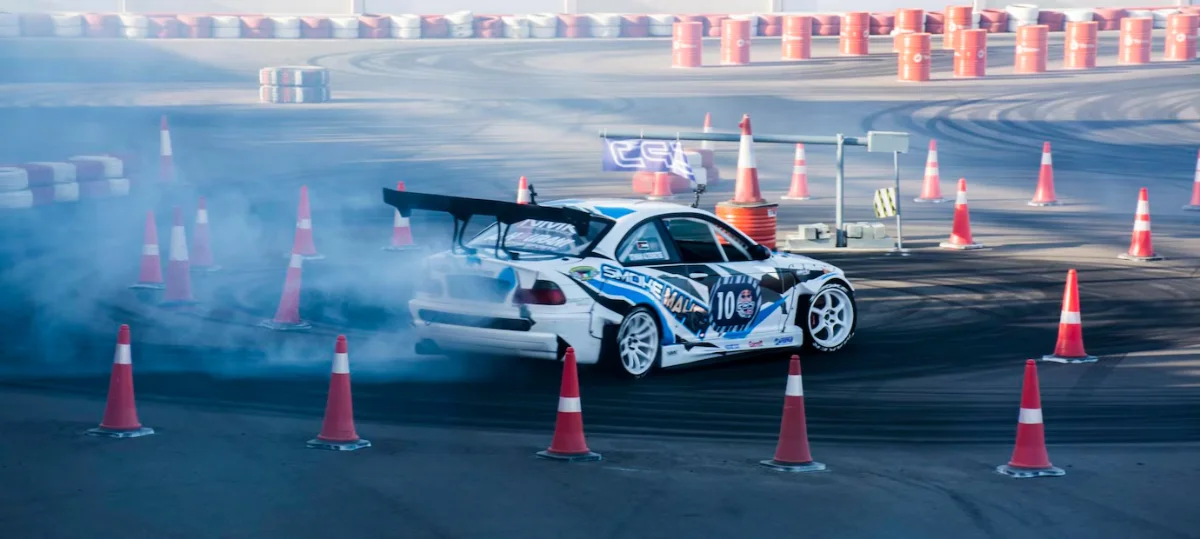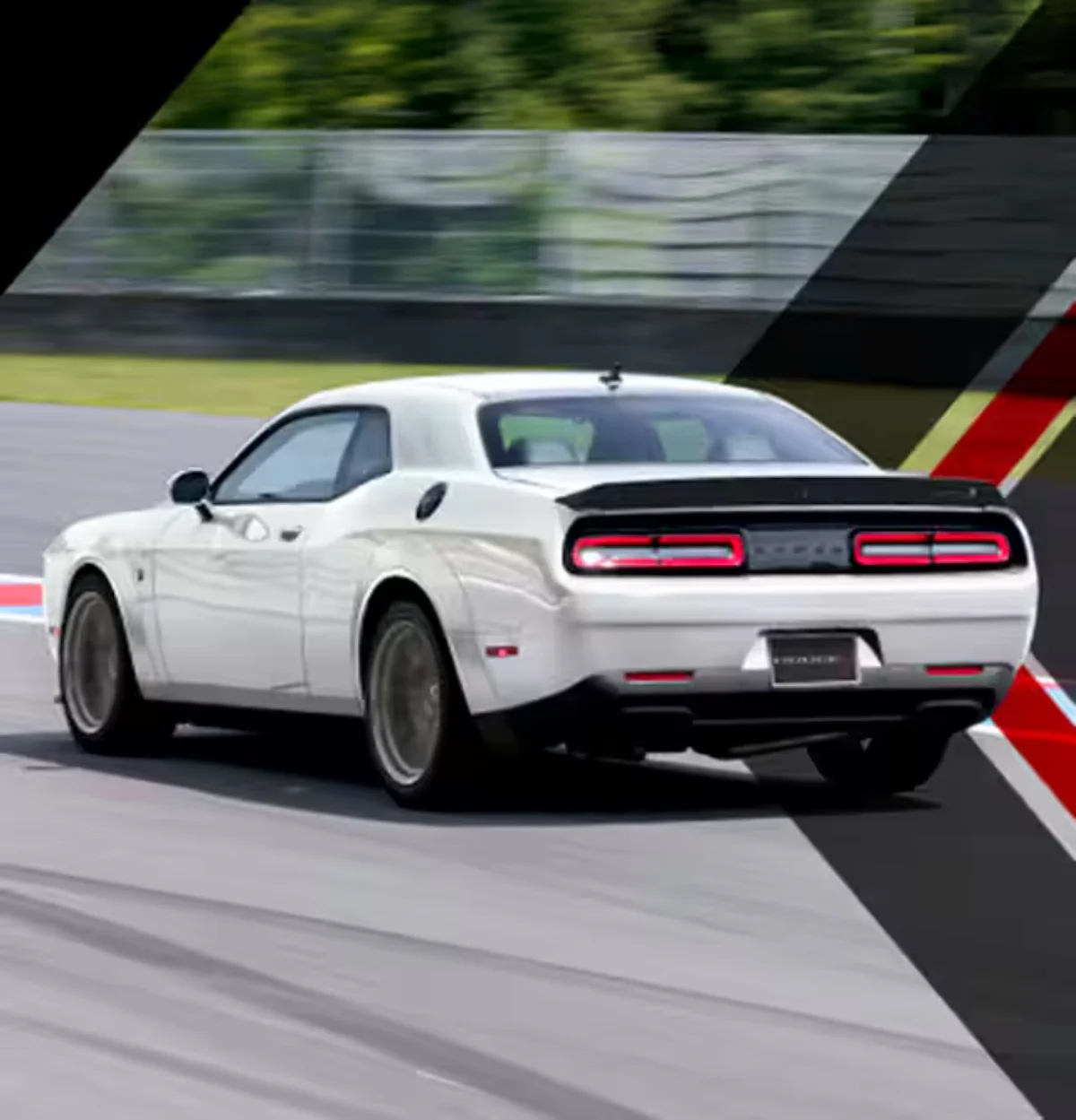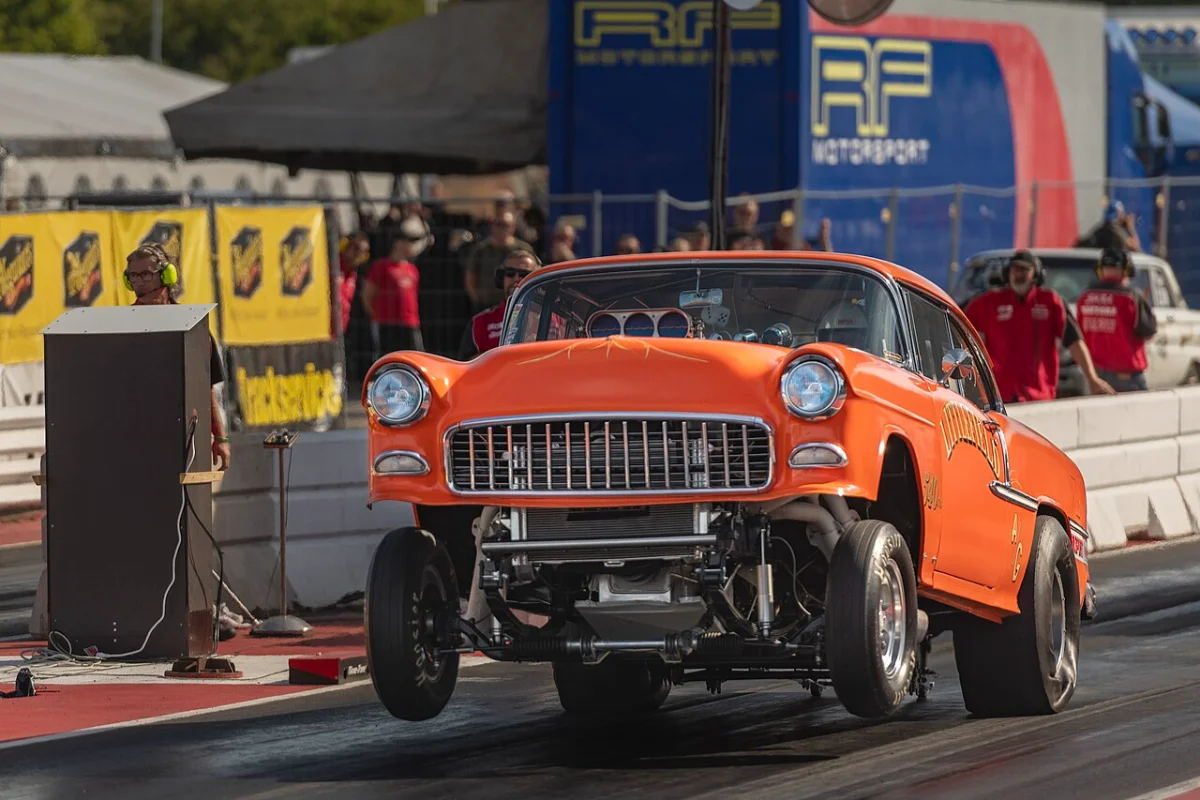
Drifting vs Drag Racing: Key Differences Explained
Drifting and drag racing are two of the most exciting and visually stunning forms of motorsports. They are both about fast cars and great drivers, but that is where the similarities end before you get into differences in goals, technique, and culture. In this guide, we explore drifting vs. drag racing, the differences between the two drivers, which is best, and the difference between street racing vs. legal racing environments.
If you’re a car enthusiast wondering which style suits you best or curious about how these motorsports compare, read on as we explore the world of tyre smoke, horsepower, and precision driving.

1. What is Drifting?
Drifting is a motorsport discipline that focuses on controlled oversteer. Drivers intentionally slide their cars through corners while maintaining precise control. Originating from Japan’s mountain roads in the 1970s and popularised by events like the D1 Grand Prix and Formula Drift, drifting has evolved into a global phenomenon.
Key Features of Drifting:
- Technique-Based – Drivers maintain control while sliding through corners.
- Judged Sport – Unlike traditional racing, winners are determined by style, speed, and angle.
- High Skill Requirement – Requires precise throttle control, countersteering, and weight transfer.
- Tyre Consumption – Rapid tire wear due to continuous sliding.
- Car Setup Matters – Lightweight, balanced rear-wheel-drive (RWD) cars perform best.
Best Cars for Drifting:
- Nissan Silvia (S13, S14, S15)
- Toyota AE86
- Mazda RX-7
- Ford Mustang (modern drift-spec models)
- BMW M3 (E36, E46)
Drifting prioritises driver skill and car control over sheer speed, making it a thrilling spectator sport that rewards creativity and finesse. The sport continues to grow in popularity, with new professional series emerging worldwide.

2. What is Drag Racing?
Drag racing is about straight-line speed and acceleration. Two cars race head-to-head over a quarter-mile (1/4 mile) or eighth-mile (1/8 mile) track. The goal is simple: achieve the fastest time from a standing start to the finish line.
Key Features of Drag Racing:
- Acceleration-Focused – The objective is to reach the highest speed in the shortest distance.
- Reaction Time Matters – Quick reflexes at the start line can determine the winner.
- High-Horsepower Cars – Drag cars often exceed 1,000+ horsepower for maximum acceleration.
- Straight-Line Racing – Unlike drifting, cornering ability is irrelevant.
- Perfect Launching is Crucial – A poor start can cost a race.
Best Cars for Drag Racing:
- Dodge Challenger SRT Hellcat
- Chevrolet Camaro ZL1
- Ford Mustang Shelby GT500
- Nissan GT-R R35 (modified for high-speed runs)
- Top Fuel Dragsters (specialised race cars capable of sub-4-second quarter-mile times)
In contrast to drifting, drag racing is about raw power, mechanical grip, and acceleration rather than finesse and technique. The world of drag racing has evolved significantly, with professional NHRA drag events featuring cars capable of mind-blowing acceleration and speed records.

3. Drifting vs. Drag Racing: A Head-to-Head Comparison
| Category | Drifting | Drag Racing |
| Objective | Controlled oversteer & style | Fastest acceleration & top speed |
| Track Type | Circuit with tight corners | Straight-line, quarter-mile track |
| Judging | Style, speed, and angle | The first to cross the finish line wins |
| Car Setup | Lightweight, balanced RWD cars | High-horsepower, traction-optimized vehicles |
| Driving Skill | Throttle control & steering precision | Quick reaction time & launch technique |
| Tire Usage | High wear due to sliding | High wear due to high-speed launches |
| Entry Cost | Moderate to High | Moderate to High |
| Danger Level | Moderate risk of spins | High risk of extreme speed crashes |
Both styles require serious skill, but they cater to different types of drivers. If you love precision driving and style, drifting is your game. If you’re into raw power and speed, drag racing is where it’s at.
4. Street Racing vs. Legal Racing: Safety and Regulations
The popularity of drifting vs. drag racing has increased street racing, which poses significant safety risks and legal consequences. While street racing has long been romanticised in car culture, professional racing events offer a safer and more controlled environment.
The Dangers of Street Racing:
- Lack of Safety Measures – No barriers, safety crews, or controlled conditions.
- Legal Consequences – Heavy fines, vehicle impoundment, and criminal charges.
- Risk to Public Safety – Endangers drivers, passengers, and bystanders.
Legal Racing Alternatives:
- Formula Drift & D1 Grand Prix – Professional drifting competitions with proper safety regulations.
- NHRA Drag Racing – Official drag racing events held at sanctioned tracks.
- Local Track Days – Many racetracks offer open drift and drag events for amateurs.
Choosing legal racing over street racing ensures a safe and enjoyable experience while keeping public roads free from dangerous driving. Legal racing events provide timing equipment, safety crews, and fair competition, making them the best choice for serious racers.
5. Which Racing Style is Best for You?
Choosing between drifting vs. drag racing depends on your preferences, budget, and driving style.
Choose Drifting If:
- You enjoy technical driving and car control.
- You prefer a sport judged on skill rather than just speed.
- You like modifying cars for balance, weight transfer, and handling.
- You want a social, team-oriented motorsport with tandem battles.
Choose Drag Racing If:
- You love high-speed acceleration and straight-line power.
- You enjoy tuning cars for maximum horsepower and torque.
- You like simple race formats with clear winners.
- You want to experience the thrill of launching off the line at full power.
Both motorsports offer excitement and adrenaline in their way. Some racers even participate in both disciplines to enjoy the best of both worlds!
Conclusion: The Thrill of Speed and Skill
Drifting vs. drag racing showcases two distinct aspects of motorsports—style vs. speed. While drifting emphasises technique, creativity, and control, drag racing focuses on raw power and acceleration. Whether you’re drawn to the spectacle of sideways action or the rush of a quarter-mile blast, both racing styles offer unforgettable experiences.
Regardless of your preference, choosing legal racing over street racing ensures safety, fair competition, and an opportunity to improve your skills without unnecessary risks. So, which side are you on—precision drifting or pure speed racing? Let us know in the comments below!


